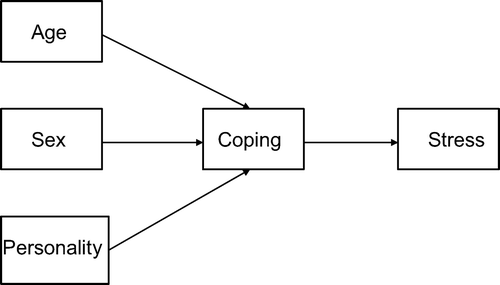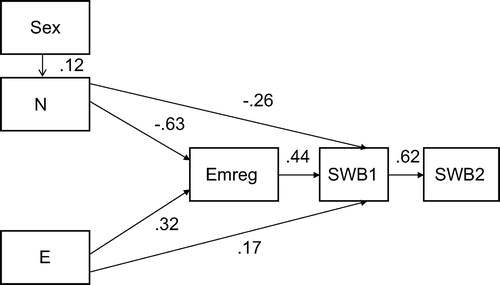Figures & data
Table I. Descriptive statistics
Table II. Correlations among the study variables
Table III. Results of tests for age differences in EI, coping and stress
Table IV. Results of tests for sex differences
Table V. Scale-level factor analysis for EI and coping scales
Table VI. Correlations of factor scores with other measures
Figure 1. Conceptual form of the model for associations of personality and composite emotional intelligence/coping factors with stress.

Figure 2. Structural equation modelling model for stress. For clarity some correlations included in the model are not shown in the diagram. These were correlations among the personality traits, and between the two composite factors. The values for these correlations from the model were: C/E = .22, N/E = −.27, N/C = −.34, factor correlation = .35. C = Conscientiousness; E = Extraversion; Emreg = Emotion Regulation factor; N = Neuroticism; StressW1, StressW2 = stress over past week at T1 (start of study), T2 (immediately before exames), respectively; StressY = stress over past year; Task = Task Focus factor.

Figure 3. Structural equation modelling model for SWB. A correlation between N and E was included in the model; its value was −.27. E = Extraversion; Emreg = Emotion Regulation factor; N = Neuroticism; SWB1, SWB2 = subjective wellbeing at T1 (start of study), T2 (immediately before exams), respectively.
